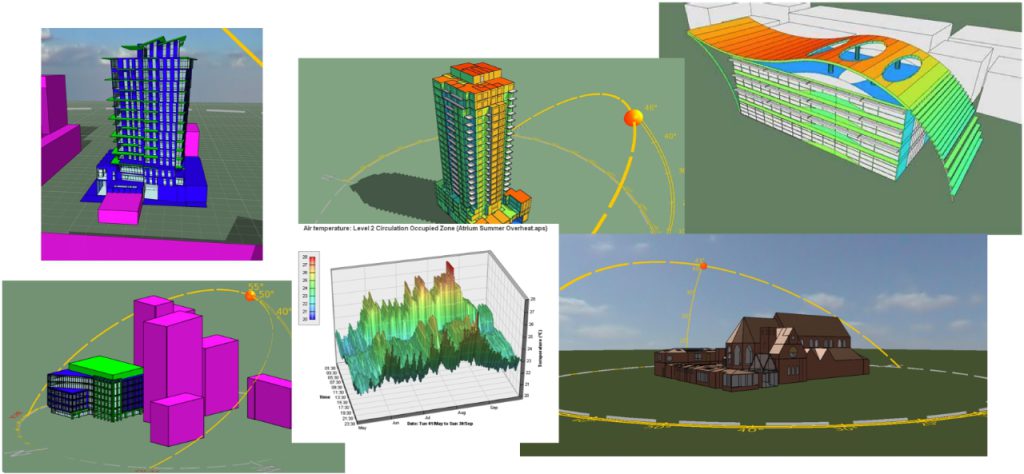Navigating the Path to Net Zero
The path to net zero gained urgency when in 2019, the UK Government amended the Climate Change Act 2008
to set key targets for achieving net zero emissions by 2050 (2045 in Scotland).


The race to achieve these targets within the built environment will need to see significant changes to our new and existing building stock and how these are managed and operated. Around 40% of the UK’s total energy usage is attributed to heating and powering our buildings, forming a key part in the net zero journey.
80% of the buildings that will be around in 2050 have already been built, therefore efforts to reduce emissions must primarily focus on existing stock.
Using dynamic simulation software, we create digital twin models and calibrate with measured utility consumption data to initially understand current energy demands and to allow us to test and appraise solutions to reduce energy and set a path to net zero.
Our aim is to simplify the process of net zero and provide our clients with a holistic-phased approach. Building Standards legislation and planning requirements are also in a period of significant change for new developments in response to this climate emergency.




The path to avoid catastrophe climate change has been set. The science could not be clearer: by the middle of this century the world has to reduce emissions to as close to zero as possible, with the small amount of remaining emissions
absorbed through natural carbon sinks and carbon capture.
We each need to play our part as experts, as clients, and as human beings, to achieve net zero.
Where we come in, is that we have the expertise to help and lead our clients on the path to net zero and sustainability, now and in the future.
Sustainability is at the heart of all of our designs.
We collaborate from the outset of the project to allow us to deliver a low energy solution that meets the specific needs of the client and users.
Our team has significant expertise in building simulation modelling. We utilise Integrated Environmental Solutions (IES) such as dynamic simulation software, and our accredited Low Carbon Energy Assessors
are Level 5 users, allowing us to carry out complex building analysis.
We generate a 3D model of the project, then carry out a range of assessments suiting the specific project requirements including Computational Fluid Dynamics (CFD), Daylighting reviews, Overheating and Ventilation studies, Energy and Carbon reviews and Building Standards compliance including the production of Building Regulations compliance documentation (SBEM & EPCs).
We can accurately predict in-use energy consumption and carbon emissions which also allows us to model internal environment conditions. Working with the design teams, we can ensure the optimal solution is determined and developed.


We offer the following services:
- Energy Strategy Appraisals including planning support.
- Net Zero Modelling and Reporting
- Carbon Management Plans
- Net Zero Public Building Standard
- Carbon Reduction Funding application assistance
- Operational Energy analysis – including TM54 Reviews
- Passive Design Analysis
- Thermal Comfort, Overheating and Natural Ventilation modelling.
- Building Standards Certification, including Building Regulations Compliance and Energy Performance Certificate (EPCs)
- Design for Performance modelling
- Nabers Assessments
- Daylight Analysis
- PV Analysis
- ESOS Assessments
- Section 63 Assessment
- BREEAM & WELL Assessments